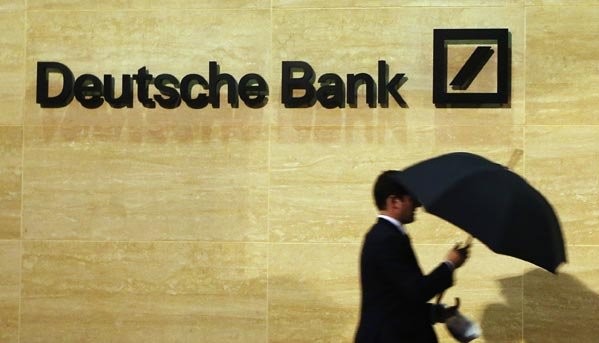Add your promotional text...
Unpacking 2025: Deutsche Bank’s Take on Growth, Inflation, and Investment Strategies in Uncertain Times
Synopsis: Deutsche Bank analysts foresee a challenging macroeconomic landscape for the US in 2025, marked by policy uncertainty and tempered growth prospects. This blog delves into the bank's projections for GDP, inflation, Federal Reserve policy, and investment strategies, providing insights into what lies ahead for the economy.
MARKETSGLOBAL
By Alankrita Shukla
11/26/20242 min read


The United States’ economic future for 2025 is clouded by uncertainty, with Deutsche Bank describing the macroeconomic outlook as “murky at best.” As global markets keep a keen eye on U.S. policies under the Trump administration, economists are grappling with the dual forces of potential growth and inflationary pressures. Deutsche Bank's detailed report highlights critical factors that could shape the economic trajectory over the next few years.
Policy Impacts: A Double-Edged Sword
The Trump administration's economic policies present a mixed bag of opportunities and risks. On the one hand, the promise of additional tax-cut measures could stimulate economic activity, supporting GDP growth. However, these measures come with a caveat: a staunchly protectionist stance. Analysts led by Nicole DeBlase caution that expanded trade wars or new tariffs could result in inflationary pressures. This, in turn, might prompt the Federal Reserve to adopt a more hawkish stance, potentially keeping interest rates higher for longer and restraining economic recovery.
GDP Growth: A Slow Deceleration
Deutsche Bank projects a modest slowdown in U.S. GDP growth over the next few years:
2024: GDP growth is expected to reach 2.7%.
2025: A slight deceleration to 2.5% is anticipated.
2026: Growth is forecast to slow further to 2.4%.
While a "red sweep" in the 2025 elections might provide a temporary economic boost, analysts expect growth to taper off as structural challenges take center stage.
Inflation and Federal Reserve Policy
Inflation remains a persistent concern in Deutsche Bank's outlook. The report revises the core Personal Consumption Expenditures (PCE) inflation forecast, expecting it to stabilize at or above 2.5% through 2026. This adjustment indicates that inflation may not retreat as quickly as previously anticipated.
In terms of monetary policy, the bank’s baseline forecast includes a potential 25 basis point rate cut by the Federal Reserve in December. However, this decision is seen as a “close call.” Beyond this, the Fed is likely to maintain an extended pause, keeping the federal funds rate above 4% into 2026. Any signs of persistent inflation, a reaccelerating labor market, or rising inflation expectations could prompt a shift in this cautious easing stance.
Uncertainty: A Dominant Theme
One of the report's central messages is the heightened uncertainty surrounding the economic outlook. Economist Matt Luzzetti emphasizes that the timing, sequencing, and details of policy changes remain unknown, necessitating frequent revisions to assumptions. This uncertainty, compounded by the risk of a more severe trade war, underscores the importance of maintaining flexibility in forecasting.
Strategic Insights for Investors
Amid a landscape of modest growth and policy-driven risks, Deutsche Bank advises a targeted investment approach. Rather than banking on a broad-based economic recovery, strategists recommend focusing on company-specific opportunities. Key areas of interest include:
Organic Growth: Firms with inherent growth drivers independent of macroeconomic conditions.
Margin Improvements: Companies demonstrating idiosyncratic margin enhancement trends.
Capital Deployment: Businesses with strategic optionality in capital allocation.
This nuanced approach reflects the bank's view that wide-scale industrial recovery in 2025 is unlikely, making individual stock selection critical.
Looking Ahead: A Balancing Act
Deutsche Bank’s projections paint a complex picture of the U.S. economy in 2025 and beyond. The interplay of tax cuts, protectionist policies, inflation dynamics, and Federal Reserve decisions will significantly influence growth trajectories. With GDP expected to decelerate and inflation remaining sticky, the path forward is fraught with challenges. However, opportunities abound for investors willing to adopt a selective, company-focused strategy.
As policymakers and market participants navigate these uncertain waters, the need for agility, informed decision-making, and long-term perspective has never been greater. While the outlook may be “murky,” proactive measures and a clear-eyed understanding of economic drivers can illuminate the path forward.
